Originally, I planned to write a single post regarding all the differences I’ve noticed between living in Tokyo and living in America; however, that post became rather long, so I decided to split it into two parts. If you read the title, you have probably already deduced that I’ll be talking about transportation as well as fashion and beauty standards in this post. There is a lot to talk about in regards to those two topics, but I’ll avoid rambling on too long about all the minor nuances I’ve experienced and hit on the major points.
Transportation
There are two big ideas I want to talk about regarding transportation in Tokyo: Public Transportation and Private Transportation
Public Transport
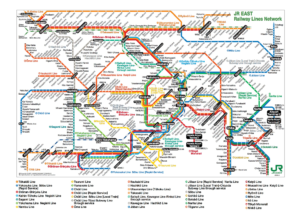
I can’t speak for all of America, but back in Houston, Texas, public transportation really isn’t an amenity we value. There is no subway. The train system is so limited it’s basically useless unless you’re in the center of the city. Bus routes are also fairly limited in comparison to other cities. Essentially, if you want to get around Houston, you need a car. That is the primary mode of transportation. Tokyo’s public transportation system, however, is incredibly complex, efficient, and affordable. I’ve touched on this a bit in my first post, but now I plan to go a little more into detail.
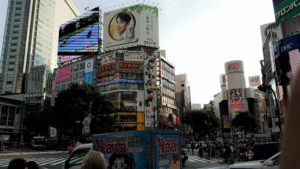
Roads in Tokyo aren’t just large, glorified sidewalks, though in certain areas they’re certainly treated that way. You can navigate Tokyo by car or taxi, but you would be in the extreme minority. The train lines are more widely used and, in my opinion, affordable. In many cases, it’s also much faster to navigate the city by train, and finding parking in the narrow, cramped side streets of Tokyo is a bit of a challenge even when you do get to where you’re going. To put things into context, I’ll give an example based on my travels in Tokyo. My friends and I decided to visit Asakusa on the day of a fireworks festival. Traveling from the station nearest to ICU to Asakusa station costs 560 yen (about five dollars) for a 52 minute train ride. It would take 55 minutes to and hour and 40 minutes by car. More often than not, google maps won’t even bother recommending the car routes and will direct you straight to the train and subway lines.
Another interesting difference is that in America, we build what we want in our cities and then adjust the transportation systems to get there. However, in Tokyo the major shopping areas and services tend to gather and build themselves up around already established train stations.
Private Transport

As you distance yourself from central Tokyo and the more populated areas cars and accessible streets become more common. The first big point regarding road travel is that in Japan you drive on the left side of the road and cars are built accordingly. This isn’t all too remarkable. You adjust fairly quickly to the difference, though I didn’t have to drive during my stay. What’s more interesting, in my opinion, is how narrow the roads are and how the vehicles are built in response.
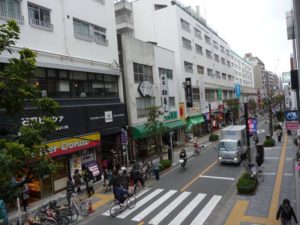
Because of the limited space available in the Tokyo area, everything is cramped together for the most part. Side roads tend to only accommodate a single car, and in less populated areas the main roads are two lanes. Two, very narrow lanes. When stopping at intersections, the space between the intersection itself and where cars stop is significantly larger than what is standard in America. This is due to the fact that the turns on the roads are very sharp. Watching buses navigate the narrow pathways is pretty impressive.
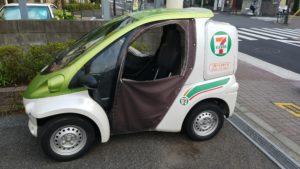
In order to navigate the aforementioned narrow streets Japanese cars are more compact than American models, and many of them are box shaped. A large SUV or truck wouldn’t be able to handle the sharp turns and would more than likely end up scraping against cars on the other side of the road. As for the box shapes, I’m really not sure what the reason is behind that. Seems to be a popular design choice, but the box cars don’t really perform significantly better than the rounder counterparts. Motorcycles are a tad more common further from central Tokyo than they are in the US, but cars are the primary mode of transportation on the roads.
That said, road travel is the least common way to get around. You’ll typically see more folks getting around on bicycles or on foot if their destination isn’t too far from home. From what I’ve seen, a good, reliable bike is a better investment than a car.
Fashion and Beauty
There are three big differences I noticed in regards to beauty standards between Japan and America: dental cosmetics, what’s attractive, and general fashion.
Dental Cosmetics
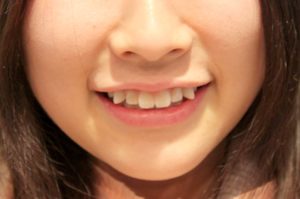
I’m not entirely sure that’s the right phrase for the topic at hand, but I what I wanted to briefly talk about is the importance of corrective procedures like braces. In Japan having white teeth is more important than having straight teeth. This is a sort of minor difference in the grand scheme of things, but I found it really interesting when my teacher explained it in class. Especially because getting braces is almost a right of passage in America. It’s really common to see boys and girls alike with crooked teeth. Some younger Japanese women actually consider some crooked teeth cute. Again, it’s a very small thing, but it’s different enough to be interesting.
What’s Attractive
For this section I can only really comment about women’s beauty standards, because that was all I paid attention to. That said, there are very noticeable differences between what is considered an ideal woman in Japan and America. I would say that we Americans value three things: breasts, curves, and butts. Most of our clothes are tight fitting or low cut to accent these features. The hour glass figure is what we aspire to. Girls often lament over the size of their chest or glutes. However, in Japan this is not at all the case. I would say that if there is any feature that is idealized in Japan it is probably a woman’s legs. Girls don’t show nearly as much skin in Japan, but wearing shorts or skirts that flash some leg is completely acceptable.
On top of that, the ideal silhouette is inherently different. I mentioned before that Americans aspire to the hourglass silhouette. However, in my opinion, Japanese fashion doesn’t accent any silhouette at all. Clothes are generally baggy and formless. Japanese women are thinner than most American women, their breasts are significantly smaller, and they don’t really have posteriors to write home about. Sorry if I’m being rude or crude, but these are my honest opinions. I think this difference in body types is what leads to the emphasis on legs and the lack of form fitting clothing.
General Fashion
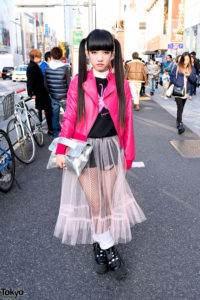
I think that whenever someone says “Tokyo fashion” you instantly think of the more colorful and abstract fashion common among young people in Harajuku. Or maybe they think of something that’s bold but a bit a tad more mundane like the picture to the right. However, this really isn’t the case. It’s true that a few younger women wear outfits like this regularly, but most women don’t. Tokyo fashion ended up being much more subdued than I anticipated.
The biggest difference between expectation and reality is that bright colors aren’t at all common in Tokyo fashion. You’re much more likely to see even young girls sporting pastels rather than neon colors. White, cream, and pastels were the most common colors I saw. This is distinct from American fashion for two reasons. One being that we tend to favor bolder shades like jewel tones and the occasional neon, but we also use vibrant prints. In America you’d be hard pressed to find someone wearing a t-shirt with no design on it. There’s usually some wording, a picture, or a pattern somewhere on the shirt that catches the eye. In Japan, solid prints are the go to style. Mundane Tokyo fashion seems to use color blocking to spice up an outfit rather than using zany and interesting prints. Case in point: Uniqlo.
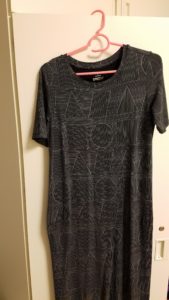
Uniqlo is easily the most common clothing store I’ve run across in Tokyo. I have not been to a single section of the city where a Uniqlo wasn’t within walking distance from the station. You really can’t escape them, to be honest. When I first walked into a Uniqlo, I was very excited to see what common Japanese fashion would be, but my first impressions were somewhat poor. By American standards Uniqlo is, quite honestly, drab, dowdy, and uninspired. Solid prints as far as the eye can see. Very few shorts, but oodles of full length, business-like pants.
I could keep describing more minor differences, but the coloring and lack of prints are the most immediately noticeable differences. If I kept on going, this post would become much too long of a read, so I’ll cut it off here.
Next Time
The next post will be part two of America vs Japan where I’ll talk about food and mundane parts of everyday life. Until next time!
